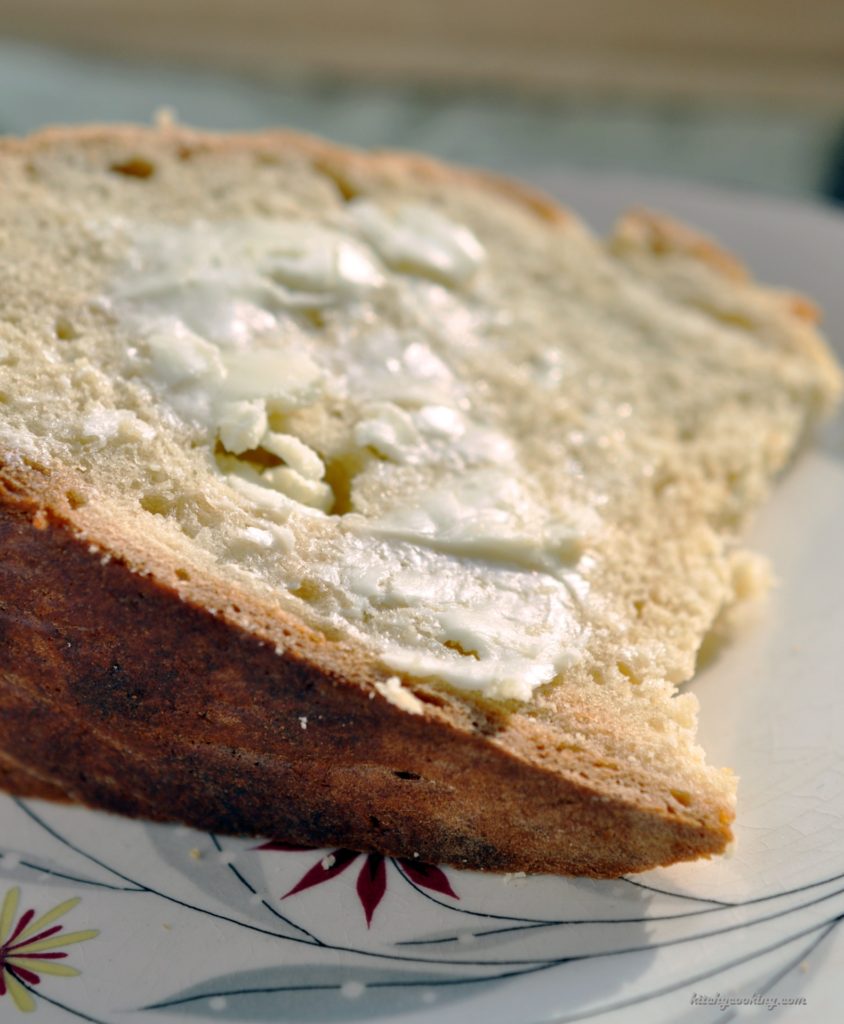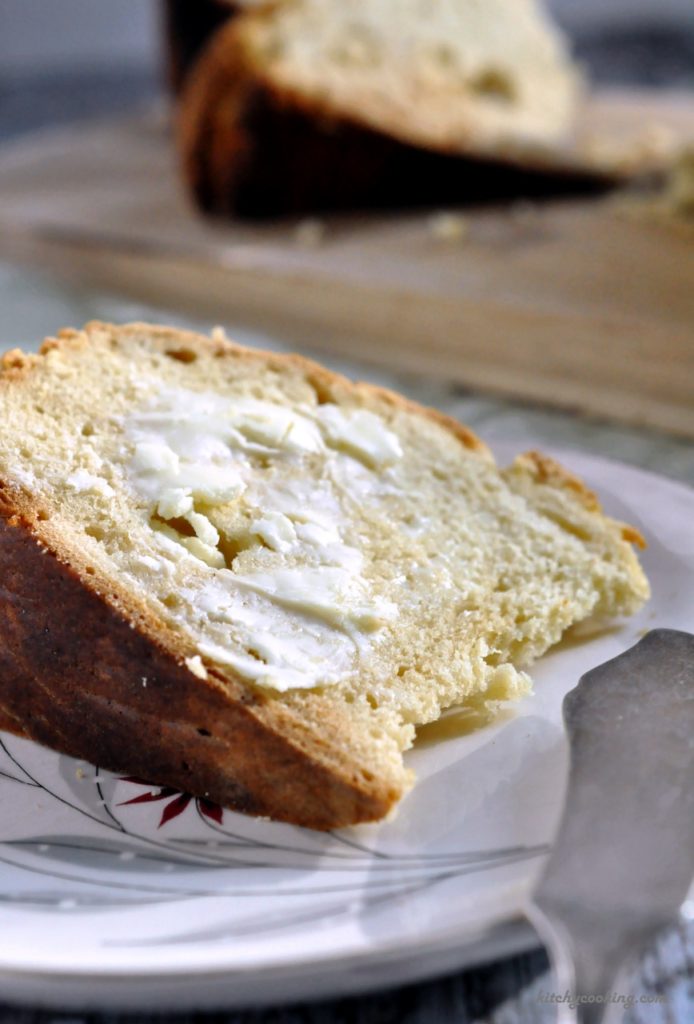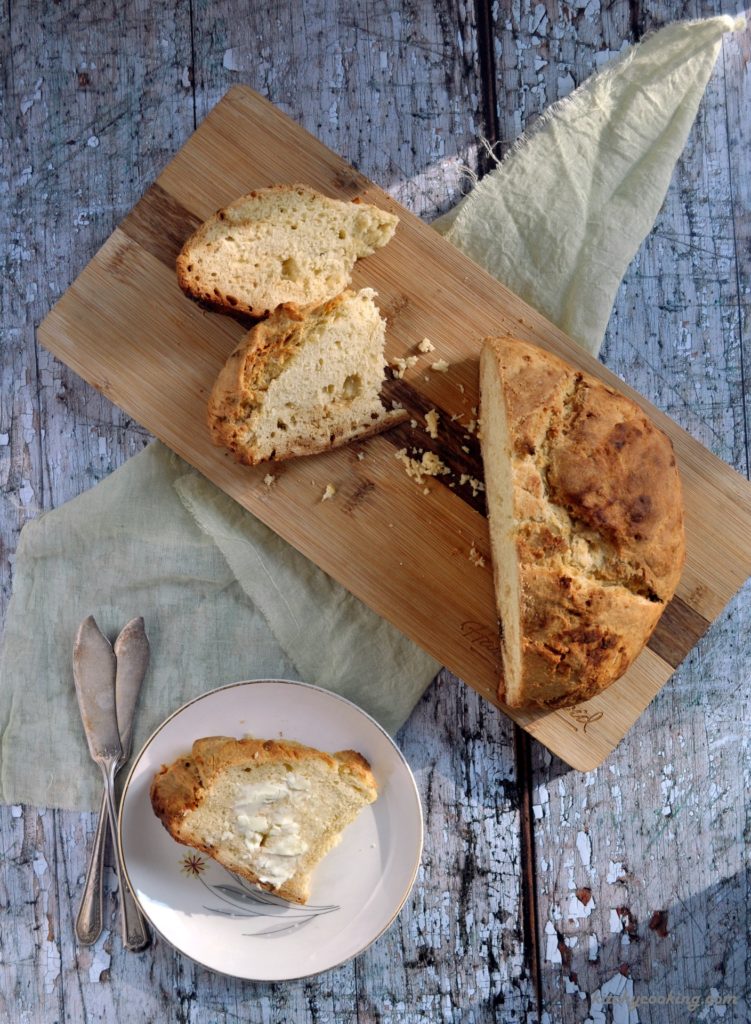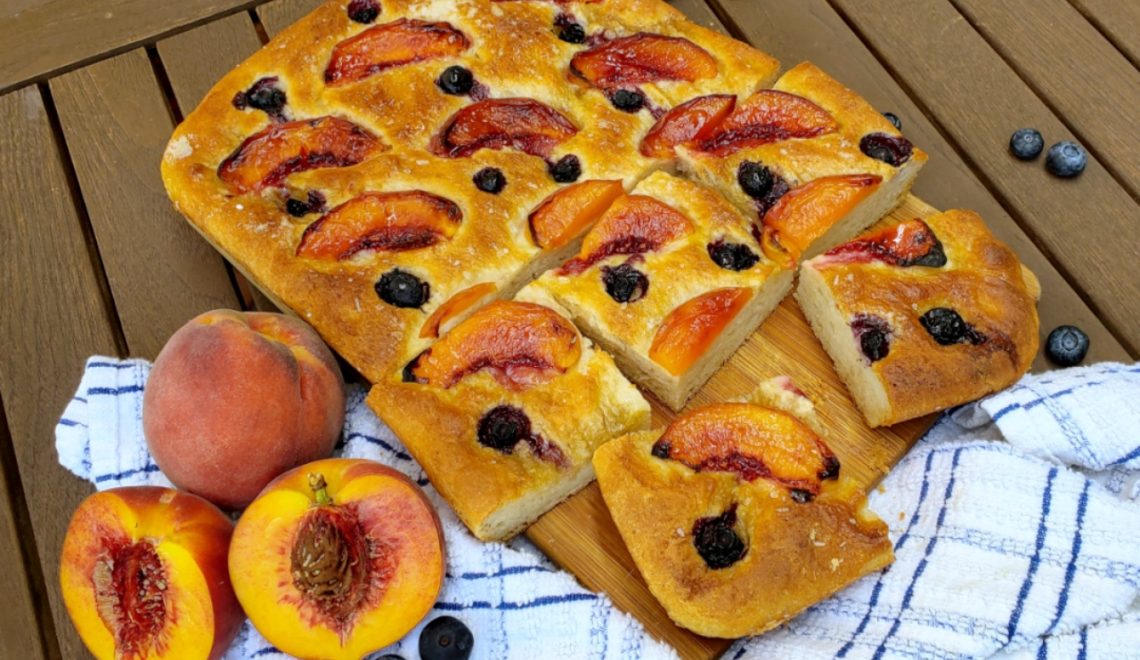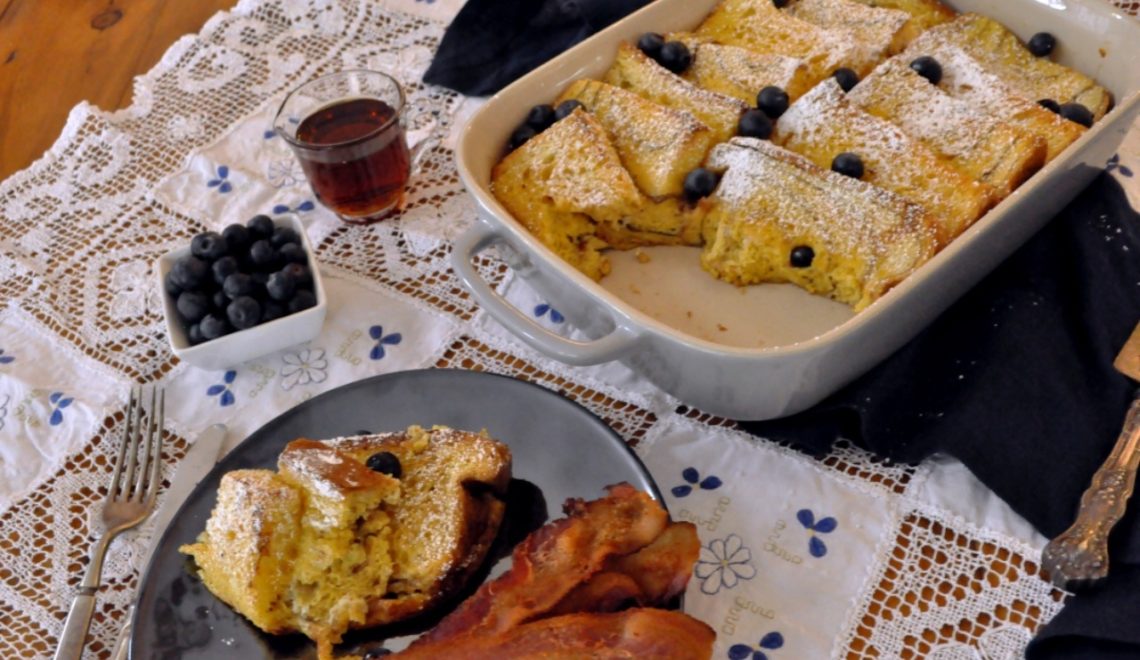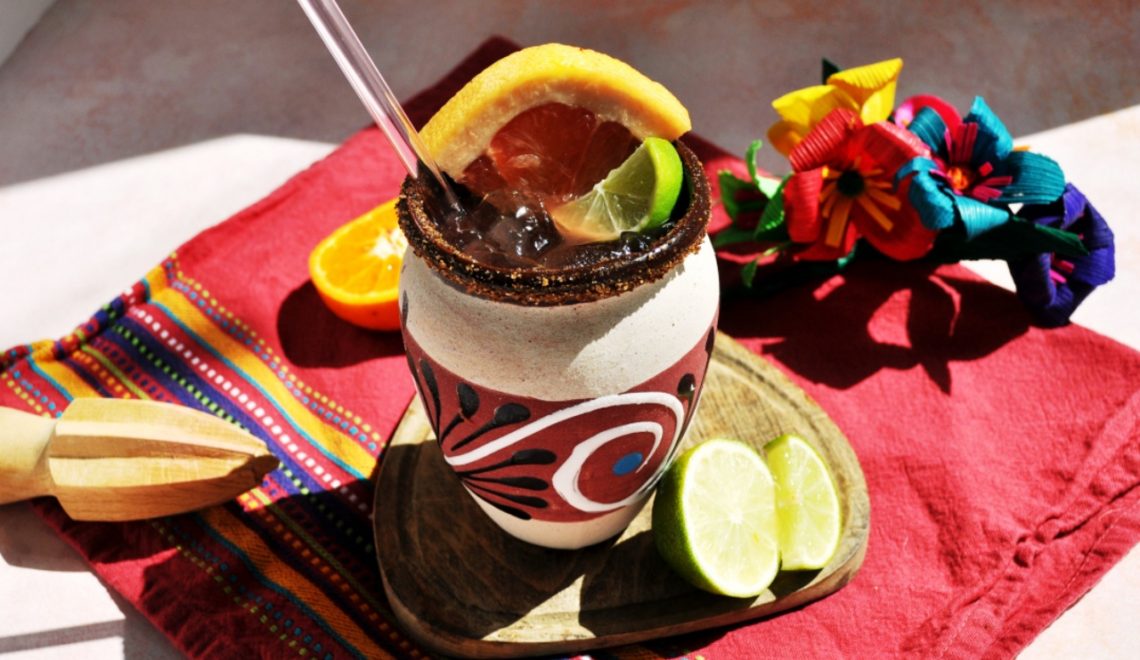Irish Soda Bread
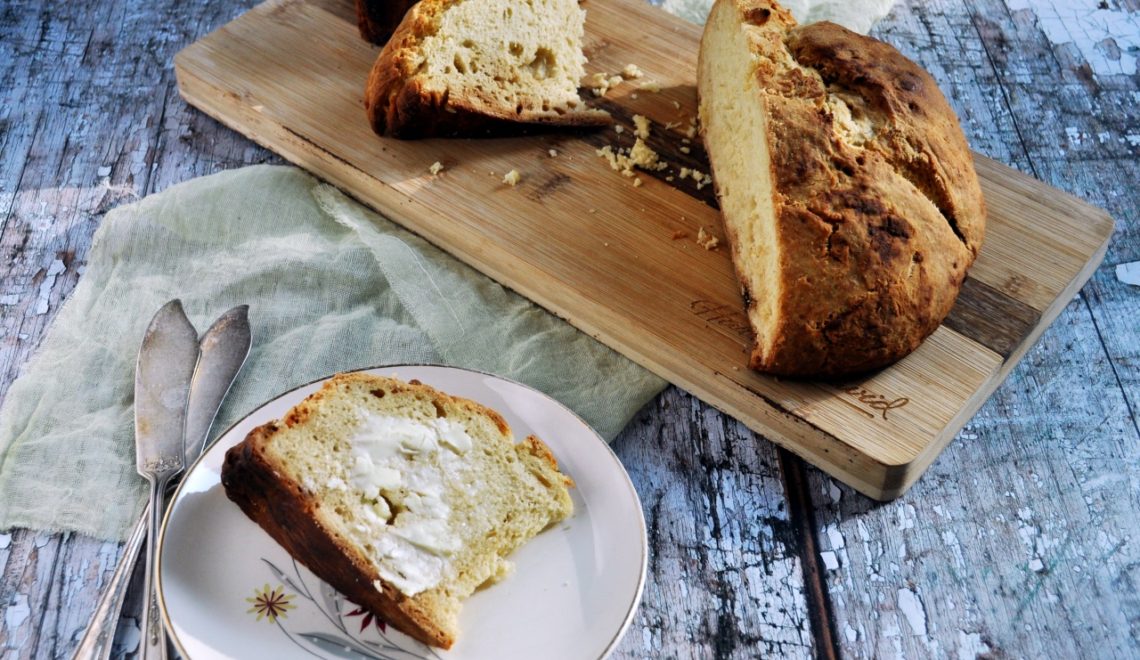
In case you’re living under a rock, you may not know that St. Patrick’s Day is tomorrow. Well, I’m here to tell you that it is! And that means it’s time to break out your cabbage, corned beef, potatoes, Guinness and Irish Whiskey. I got all mine on Monday and I’m ready!
Yes, like most Americans, I make corned beef every year on St. Patrick’s Day. What I don’t make? Cabbage! I hate cooked cabbage. I know it’s traditional but I am not a fan. So, I forgo the cabbage and just serve my corned beef with carrots and potatoes. While that meal is always a hit here in the Kitchy house, I always feel like something’s missing. Well, this year I’m going to rectify that. This year, I’m making Irish Soda Bread to go with the corned beef.
Every year around St. Patrick’s Day I see recipe after recipe for corned beef and Irish Soda Bread. While I’ve made plenty of corned beef over the years, I’ve never made Irish Soda Bread. Well, this year I decided to try it. And oh my god, am I happy I did. Now I understand why it’s so popular. Not only is it incredibly easy to whip up, it also happens to be delicious! And like corned beef, there are millions of recipes out there. The most common versions include raisins or currants. But believe it or not, that’s not the way it was originally served.
The History
While Soda Bread has long been associated with the Irish, according to my research, Ireland is not where the bread originated, mainly because bicarbonate of soda, an important ingredient in the bread, wasn’t available in Ireland until the md 1800’s. But soda bread was being made by the Native Americans long before that. They used soda ash to leaven their bread and then the pilgrims copied those recipes and started making the bread for their families. As a matter of fact, soda bread recipes can be found in American cookbooks as far back as 1796. So, how did recipes from late 18th century American make their way across the pond? Well, when the potato famine hit Ireland, one way the Irish found to keep hunger at bay was, you guessed it, soda bread.
See, since the bread only requires four ingredients, it’s not only easy to make it was also very inexpensive. Two of those ingredients, buttermilk and bicarbonate of soda, were readily available to Irish farmers because buttermilk was a by product of the butter they made, and the soda was an inexpensive staple found in most kitchens. They didn’t need yeast because acid from buttermilk reacts with the soda producing tiny bubbles of carbon dioxide that leaven the bread. For the poor families devastated by the famine, the bread was a quick, reliable option that avoided wasted and left their stomachs full. All these years later, it’s still just as easy and just as delicious!
While the classic way to make the bread was in a cast iron pot with a lid, today you can make it in a loaf pan or a baking sheet. I prefer the baking sheet because I can shape the loaf into a nice round ball. A loaf works just as well, but it may take longer to cook since the bread is so dense. That density is one reason why the Irish would cut a cross into the top of the dough. That cross was not only believed to ward off evil, it also allowed the center to be cooked all the way through.
You’ll notice one thing missing from the classic Irish recipe: raisins. As I mentioned earlier, today raisins or currants are often found in the bread. But originally raisins were a luxury. Sure, they make for a sweeter bread, but the classic was often used to accompany soups and dinner dishes. That still holds true today. Irish Soda Bread is not only delectable all by itself with a soft pad of butter, but I like to serve it with a nice, hearty stew. After all, there’s nothing better than sopping up a rich, flavorful soup with a thick piece of soda bread.
Ingredients
- 4-1/3 cups flour
- 1-1/2 teaspoons salt
- 1/1/2 teaspoons baking soda
- 1-3/4 cup buttermilk
Instructions
- Preheat oven to 400 degrees F and line a baking sheet with parchment paper.
- Whisk together the flour, salt and baking soda in a large bowl. Pour in the buttermilk and mix together with your hands until a shaggy dough comes together.
- Turn the dough out onto a floured surface and knead a few times. Form a ball and cut a deep cross through the center with a sharp knife. Don't cut all the way through.
- Place loaf on prepared baking sheet. Brush with melted butter and bake for for 40 - 50 minutes. After 30 minutes check and if bread is browning too quickly, cover with foil and finish baking. Bread is ready when a toothpick, when inserted in the center, comes out clean. Let cool for 10 - 15 minutes, slice and serve with butter.

